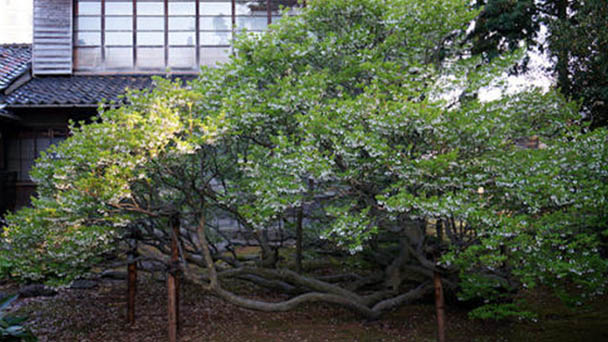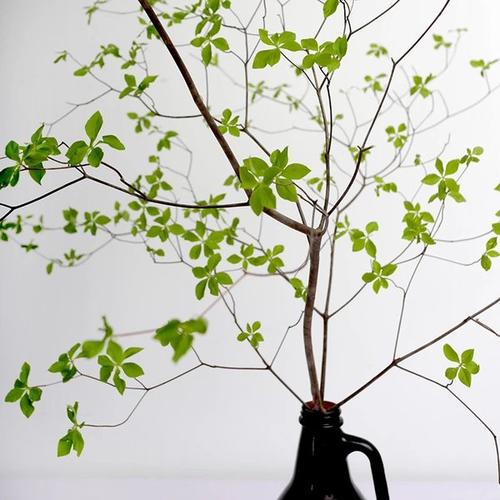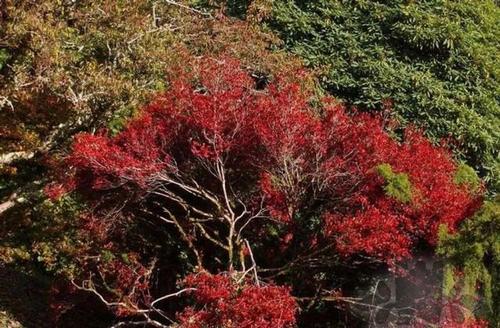How to grow and care for Enkianthus perulatus
Written by Maggie
Mar 05 2021

When we grow and care for Enkianthus perulatus, peat soil, river sand, and perlite can be mixed to prepare soil. It is best to control the temperature at 15-22 degrees. Enkianthus perulatus has a higher demand for light during the growth and flowering periods. At this time, the plants should be exposed to sufficient light. In normal cultivation, the plants should be exposed to light and shade.

1. Soil care for growing Enkianthus perulatus
Enkianthus perulatus is an ornamental plant and is often grown as a bonsai, but many people don't know how to grow and care for enkianthus perulatus. In fact, the first step in growing enkianthus perulatus is to prepare the soil. Enkianthus perulatus is suitable for growing in fertile and well-drained soil. Peat soil, river sand, and perlite can be mixed to prepare soil during cultivation.
2. Water care for growing Enkianthus perulatus
Enkianthus perulatus has a higher water requirement during the growth period. When we grow and care for Enkianthus perulatus, it is best to water the plants 2 to 3 times a week. You can moisten the soil every time you water, and you can follow the dry and wet conditions. The principle of watering the plants. Enkianthus perulatus is very sensitive to temperature changes. It is best to control the temperature at 15-22 degrees during breeding.

3. Light care for growing Enkianthus perulatus
Enkianthus perulatus has a high demand for light during the growth and flowering periods. When we grow and care for Enkianthus perulatus, it is best to place the plants in an outdoor ventilated and well-lit environment. In case of rainy days, light lamps can be used to illuminate the plants. In normal breeding, the plants should not only receive sufficient light, but also do a good job of shading.
4. Fertilizer care for growing Enkianthus perulatus
Enkianthus perulatus is a fertilizer-loving plant and has a high demand for fertilizer. It is best to apply a thin liquid fertilizer to the plants once every half a month when we grow and care for Enkianthus perulatus. The amount of fertilizer applied each time should not be too much to prevent fertilizer damage. Appropriate topdressing of phosphorus and potassium fertilizers should be applied to the plants during the flowering period. This time the fertilization is to allow the plants to bloom better.
5. Temperature care for growing Enkianthus perulatus
The optimum temperature for its growth is about 15-25℃, while the optimum temperature is 18-22℃. When the high temperature exceeds 30℃ in summer, plants will enter a dormant period, and when the temperature is below 5℃, they will stop growing.
How to propagate Enkianthus perulatus
1. Layering propagation
Take a strong branch and peel off a circle of bark about 15 to 30 cm below the top. The width of the wound after stripping should be about 1 cm, and the depth should be limited to the skin just peeled off.Cut a piece of film 10~20 cm long and 5~8 cm wide, put some wet garden soil on it, and wrap up the part of the ring peel as if it were a wound. Tie the upper and lower ends of the film tightly and bulge up in the middle.Root in about four to six weeks.After taking root, the edge of the branch root system cut together, became a new plant.
2. Cutting propagation
Enkianthus perulatus can be propagated from cuttings throughout the year, rooting faster in spring and autumn. Cut to the top of the best twigs, long 7 -8 cm, inserted in the sand bed, keep wet, inserted after about 10 days to take root, in September can be on the basin. Potted soil should be loose, fertile and good drainage, water prone to rot root death.Spring, autumn growth is rapid, every ten days fertilizes 1 time. High temperature in summer, stop fertilizing. Place ventilated cool place, avoid strong light in midsummer.Water frequently to moisten the air.Hanging golden bell branches thin and weak drooping, need to pick the heart plastic, promote branching, less moving in the flowering period, to prevent falling buds.
3. Sowing propagation
The fruit of Enkianthus perulatus is gourd fruit, and the seed is small, so it is difficult to germinate when sowing, and it is difficult to breed seedlings. Therefore, artificial pollination should be carried out during sowing propagation, and it should be sown immediately after the seed is mature, or it can be sown in spring.Some varieties cannot bear fruit even though they are artificially pollinated and can only be propagated asexually.
Latest Updated
- Benefits of Bugleweed - 7 Science-backed Health Benefits
- Bugleweed Dangers & Side Effects - Is It Poisonous?
- How to Plant Evergreen Trees - What You Should Know
- When to Plant Evergreens - Grow Guide for Evergreen Trees
- 12 Wonderful Evergreen Shrubs for Your Garden
- 12 Popular Evergreen Plants with Pictures for Beginners
- When And How To Prune A Lilac Bush Like a Pro
- How to Grow & Care for Lilac Vine (Hardenbergia Violacea)
- Japanese Lilac Tree (Syringa Reticulata) Care & Propagation Guide
- Shumard Oak Pros and Cons - What to Know
Popular Articles
- Winter maintenance of Antirrhinum Majus
- How to Grow Terminalia Mantaly Tree
- How to Grow and Care for Crossostephium Chinense
- How to grow Antirrhinum Majus in spring
- Peristeria Elata (Dove Orchid) Profile: Info & Care Guide
- Underwatered Snake Plant (Sansevieria Trifasciata) - Signs And How To Fix
- How to Care for Brazilian Jasmine Plant (Mandevilla Sanderi)
- How to Grow & Care for Graptopetalum Purple Delight in Summer
- Rosa Chinensis (China Rose): Plant Growing & Care Tips
- How to Care for Baby Sun Rose (Aptenia Cordifolia)